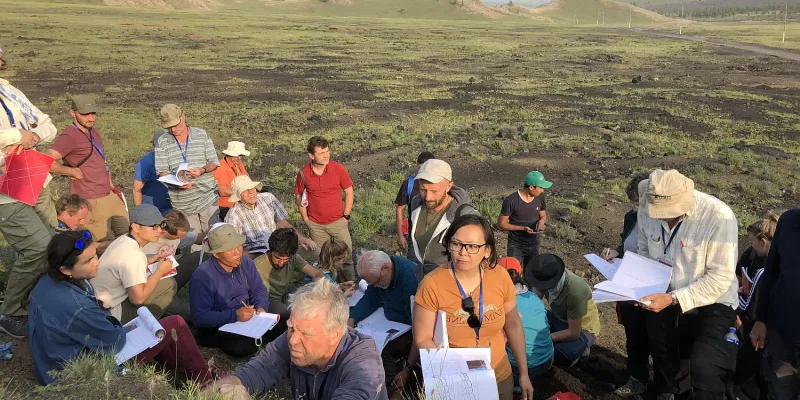New encyclopedia chapter on development and use of the WRB
The World Reference Base (WRB) is an international soil classification system that evolved from the FAO-UNESCO Legend of the Soil Map of the World. It is now in its 4th edition, which was published in 2022.
As of March 2023, a new publication explaining the background and application of the WRB system is available as a reference module in Elsevier’s new Earth Systems and Environmental Sciences Reference Collection. The chapter discusses the background, history, components, and use of the WRB system to describe soils within the top two meters of Earth’s surface.
The chapter explains how the WRB system identifies 32 Reference Soil Groups (RSGs) at the highest level of classification. At the second level, soils are named by combining the RSG with qualifiers. The qualifiers indicate chemical and morphological characteristics of soil that strongly influence its functioning.
Access the chapter here: https://doi.org/10.1016/B978-0-12-822974-3.00161-0
Full citation: Mantel, Stephan, Stefaan Dondeyne and Seppe Deckers. World reference base for soil resources (WRB). Reference Module in Earth Systems and Environmental Sciences. Elsevier. 2023. https://doi.org/10.1016/B978-0-12-822974-3.00161-0
ISRIC – World Soil Information Sustainable land management expert and Head of World Soil Museum Stephan Mantel is the lead author on the paper with Stefaan Dondeyne from the Department of Geography at Ghent University and Seppe Deckers from the Department of Earth and Environmental Sciences at University of Leuven as co-authors. Both Dr Stefaan Dondeyne and Prof Seppe Deckers have a long-standing contribution to the WRB working group. Seppe Deckers chaired the working group from 1994 till 2002.
“It is important that in soil science we can identify, describe, and name soils according to one international system that is developed and supported by the international scientific community. WRB provides that, certainly now that a field guide is part of the 4th edition,” said Stephan.
The WRB is continually developed by a working group of Commission 1.4. (Soil Classification) of the International Union of Soil Sciences (IUSS) Division 1 (Soils in Space and Time). The group consists of international soil scientists that test, revise and improve WRB as an academic service to the soil science community. Field excursions are organised annually that provide the basis for updating and improving the system.
“Concepts of soil formation, soil properties and their variation over landscapes are critically discussed and evaluated in the process. This also feeds back to discussions on the development of national classification systems and fosters collaboration between soil scientists. The ISRIC soil reference collection is a valuable source for testing and evaluating the criteria proposed and discussed within the WRB working group,” explained Stephan.
ISRIC has been involved in the development of WRB since its inception. Our former colleague Dr Otto Spaargaren†, who was awarded the prestigious IUSS Guy D Smith award for soil classification, made an important contribution to the development of the WRB system as a leading scientist and was active in various positions (vice-)chair and secretary for 14 years (1994-2010) within the WRB working group. Stephan Mantel has been vice-chair of the WRB working group since 2018.
